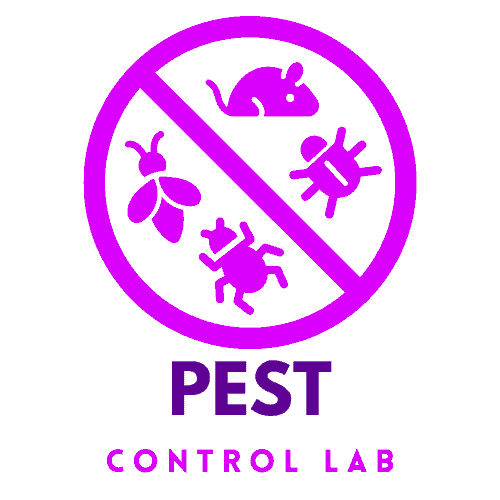Sustainable Pest Control: Facing the Resistance Challenge
Have you ever wondered why the same pest control methods seem to lose their punch over time? It’s not just your imagination; pests are getting smarter. They’re not precisely more intelligent, but they’re becoming more resistant. Like bacteria can resist antibiotics, pests evolve to resist our best attempts at control. This adaptation has pushed the pest control industry to innovate, moving towards more sustainable, eco-friendly strategies that don’t just fight pests but outsmart them. Let’s dive into the evolving battlefield of pest control and explore how we’re adapting to stay one step ahead.
The Rise of Pest Resistance

It’s a classic case of survival of the fittest: pests that survive treatments pass on their resistant genes to the next generation, leading to a rapid evolution of resistance. This phenomenon isn’t new, but it’s becoming a more pressing issue as reliance on chemical treatments continues. Over time, pests like rodents, insects, and weeds have shown remarkable adaptability, developing resistance to various chemical pesticides and herbicides. For instance, certain mosquito species have become less susceptible to DDT, a once-popular insecticide, while some agricultural pests no longer respond to traditional chemicals. This resistance doesn’t just make pest control more challenging. It raises concerns about increased chemical use, environmental damage, and the potential for pests to harm crops and spread diseases more effectively.
Climate Change and Pest Behavior

Climate change is not just about rising temperatures and erratic weather; it’s also reshaping the landscape of pest control. Warmer climates accelerate the lifecycle of many pests, leading to more frequent and larger infestations. Additionally, as the climate changes, pests are expanding their ranges into new areas where they previously couldn’t survive. This migration introduces pests to environments without natural predators, allowing their populations to skyrocket. Furthermore, the stress of changing climates can trigger more rapid development of resistance as pests are forced to adapt quickly to survive. This complex interplay between climate change and pest behavior underscores the need for pest control strategies that are flexible and responsive to these shifting dynamics.
Eco-Smart Biocontrol Strategies

In the face of growing resistance and environmental concerns, biocontrol strategies are gaining traction as a viable alternative to chemical pesticides. Biocontrol involves using natural predators, parasites, or pathogens to manage pest populations. For example, releasing ladybugs to combat aphid infestations in gardens is a simple yet effective form of biocontrol. Another innovative approach is using pheromone traps, which disrupt pest mating cycles without harming non-target species or the environment. These strategies reduce the reliance on chemicals and work in harmony with ecological systems, promoting biodiversity and resilience against pest outbreaks. By leveraging the natural enemies of pests and understanding ecological balances, we can develop sustainable, long-term solutions to pest control.
Technological Innovations in Pest Management
The digital age has ushered in a new era of pest control, marked by technological innovations that offer precise, efficient, and less invasive methods of managing pests. Drones, for instance, are being used to scout large agricultural fields, identifying pest hotspots and targeting them with pinpoint accuracy. Similarly, intelligent traps equipped with sensors can detect the presence of pests and relay real-time data to farmers, allowing for early intervention. Genetic engineering also offers promising avenues, such as modifying crops to be more resistant to pests or creating sterile male pests to reduce populations. These technologies minimize the need for chemical interventions and support more informed, data-driven decisions in pest management strategies.
Integrated Pest Management (IPM)
Integrated Pest Management (IPM) is a holistic approach that combines various management strategies to achieve long-term, sustainable pest control. IPM emphasizes understanding the pest‘s life cycle and environmental interaction to identify the most effective, least harmful control methods. This may include cultural practices, such as crop rotation to disrupt pest breeding cycles; mechanical controls, like using barriers to protect plants; biological controls, as discussed earlier; and, as a last resort, chemical controls, applied in a targeted and reasonable manner. IPM’s strength lies in its adaptability and emphasis on prevention, minimizing pest damage and environmental impact.
Case Studies and Success Stories
Success stories from around the globe highlight the potential of innovative pest control strategies. In Australia, the release of Wolbachia-infected mosquitoes has shown promise in reducing dengue fever cases by interrupting the transmission cycle. In Africa, the push-pull strategy, which involves planting repellent crops alongside staple crops to push pests away, coupled with attractive trap crops to pull them to a different location, has successfully managed pest populations without heavy chemicals. These examples demonstrate the effectiveness of thinking outside the traditional pest control box, showcasing strategies that combat pests and enhance ecosystem health.
Challenges and Future Directions

Despite the promise of these innovative strategies, challenges remain. Resistance is an ever-present threat, not just to chemicals but potentially to biological controls. Some eco-friendly methods’ scalability and effectiveness across different environments and pest species also pose significant challenges. Looking ahead, the future of pest control lies in integrating technology, biology, and ecology, leveraging the best of each to develop robust, adaptable solutions. Continuous research, public awareness, and regulatory support will be crucial in advancing these sustainable pest control measures.
Conclusion
As we’ve explored, the future of pest control is not just about fighting pests but outsmarting them through innovation, sustainability, and integration. By embracing eco-friendly strategies, leveraging technology, and adhering to Integrated Pest Management principles, we can develop more effective, less harmful ways to manage pests. The journey ahead is challenging but necessary to protect our crops, homes, and health without compromising our planet. Together, we can turn the tide against pest resistance and ensure a healthier, more sustainable coexistence with the natural world.

